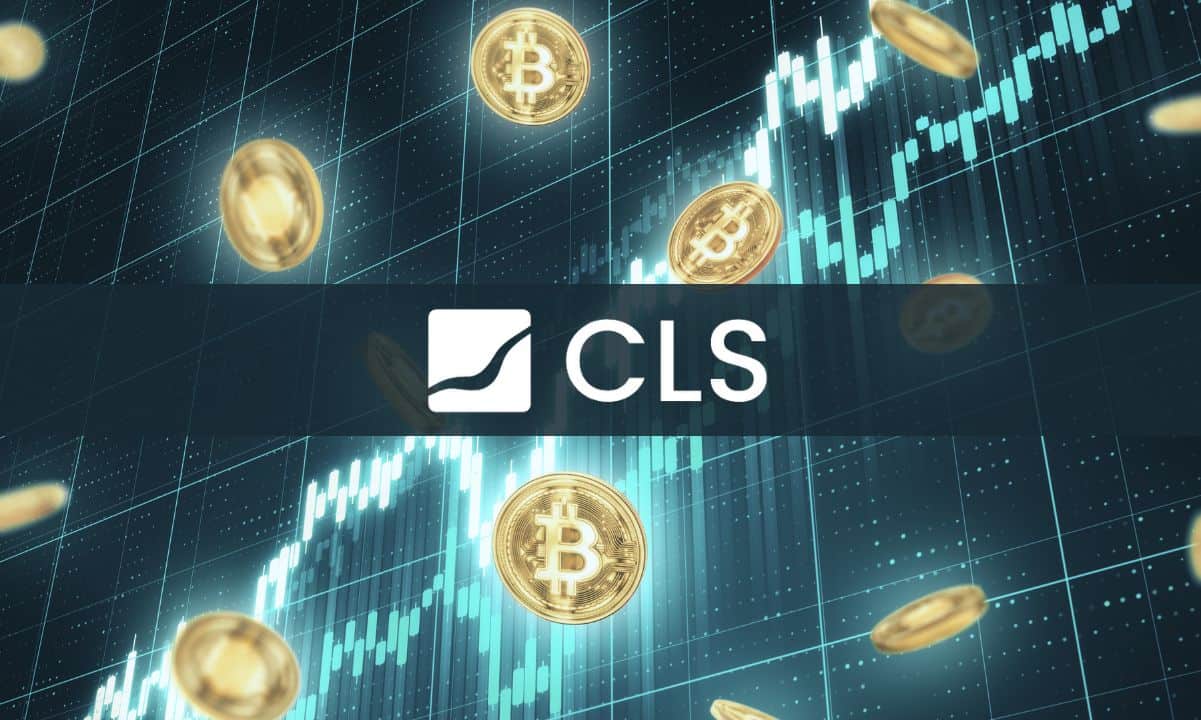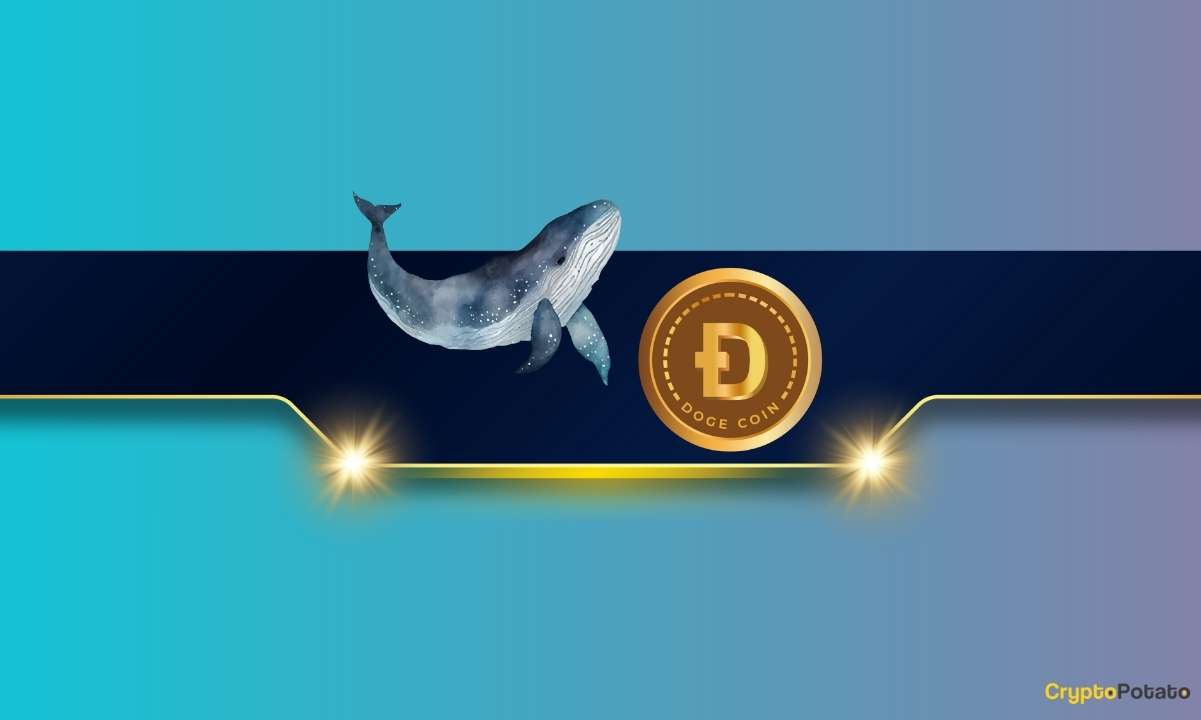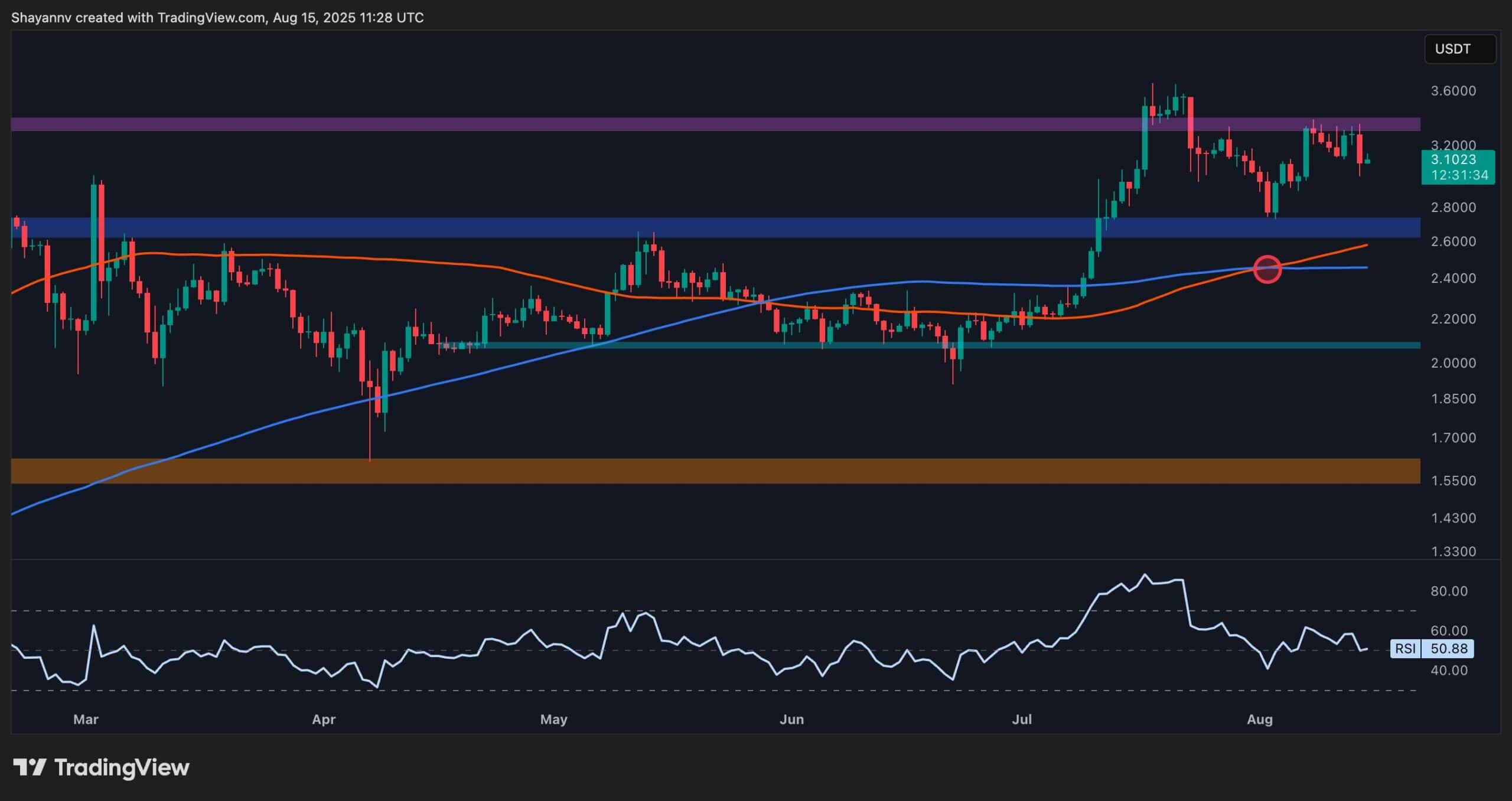Cryptocurrency
CLS Global: Enabling DeFi and DePIN Adoption in the Web2 Ecosystem

Over the years, blockchain technology has evolved from simply facilitating peer-to-peer money transfer to sophisticated functions such as decentralized finance (DeFi) and decentralized physical infrastructure network (DePIN).
DeFi comprises products that decentralize the traditional financial system, while DePIN enables the decentralization of physical infrastructure and other real-world products, blending the Web2 and Web3 ecosystems. Together, both innovations aim to bring everyone more organized structures and products.
This article delves into the intricacies of DeFi and DePIN for Web2 companies. It highlights the pivotal role CLS Global, a renowned crypto trading services provider, plays in supporting these initiatives.
DeFi and DePin: Drivers of Bringing More Organized Structures and Products
DeFi is an umbrella term that blends “decentralization” and “finance.” The idea behind the concept is to integrate services offered in the traditional financial sector into the blockchain ecosystem. Imagine applying for a loan on the blockchain or depositing your crypto holdings into a pool of funds for passive income. That’s precisely what DeFi brings to the table.
Banks or other centralized financial institutions operate as intermediaries between investors and the desired financial product in the traditional financial system. Underpinned by blockchain technology, DeFi projects change the narrative by allowing users to execute transactions by interacting with self-executing computer programs called smart contracts. The mechanics of the DeFi ecosystem give investors complete control of their funds.
The DeFi sector offers multiple products. These include borrowing and lending services, earning returns through yield farming, staking tokens to strengthen blockchain security, and more.
Decentralized Physical Infrastructure Network (DePIN), on the other hand, is an innovation that blends blockchain functionality into physical hardware, such as servers or networks. Instead of relying on a single entity, a network of participants helps to build, maintain, and run the infrastructure, making it more accessible, transparent, and distributed.
Essentially, DePIN enables physical infrastructures like real estate, solar panels and batteries for energy systems, hotspots and routers for wireless networks, or servers for cloud computing to be tokenized on the blockchain. Additionally, DePINs can operate as DeFi projects, allowing users to trade, borrow, lend, and stake tokens.
Based on their broad functionalities, DeFi and DePIN can potentially improve the global financial system, making financial services more accessible, reducing costs, and eliminating intermediaries. These innovations also enhance transparency and security, which are uncommon in today’s traditional financial system. Blockchain’s transparent record of transactions helps reduce fraud and build trust, while its decentralization makes systems less vulnerable to security attacks.
DeFi and DePIN offer users complete control and flexibility over their assets and transactions without relying on central authorities. They also foster innovation by supporting various financial activities and applications, leading to a more efficient economic system.
Benefits of DeFi and DePIN
Accessibility: They provide financial services to people who may not have access to traditional financial institutions due to geographical or regulatory limitations.
Lower Costs: Operational fees for blockchain-based projects are drastically reduced as intermediaries and central authorities are removed.
Increased Transparency: Although financial institutions may offer some transparency, blockchain technology ensures extensive transparency and verifiable transactions.
Enhanced Security: Decentralization offers better protection against hacks as there is no single point of failure.
Complete Control of Assets: Unlike financial companies that manage users’ money, DeFi and DePIN projects allow users to manage their assets completely.
Challenges of DeFi and DePIN
Regulatory Hurdles: As regulatory bodies globally are still figuring out how to regulate these new technologies, there exists a constant shift in rules and guidelines. This uncertainty can create challenges for users and developers as they struggle to comply with evolving crypto laws and regulations.
Technical Complexity: The technology can be complicated for users to understand and use. Overcoming the hurdle lies in each user’s effort to study and understand the blockchain realm.
Scalability Issues: Handling large transaction volumes can be challenging depending on the underlying blockchain network. Still, some blockchains have overcome this challenge through the proof of stake (PoS) consensus mechanism and other similar innovations.
Risk of total loss of funds: The decentralized nature of the blockchain makes it nearly impossible for investors to recover funds sent to the wrong wallet addresses. The same challenge applies when users prey to cyber exploits like phishing attacks.
Merging DeFi and DePin with Web2 Companies
Today, centralized entities own and operate the most prominent companies and projects. It means users rely on a single authority and remain vulnerable to a single point of failure. However, DeFi and DePIN sought to change the narrative. Both innovations aim to revolutionize how Web2 companies operate through their diverse functionalities. Here’s how.
As previously highlighted, DeFi brings decentralization into traditional finance (TradFi). It is possible to merge DeFi with Web2 companies, especially those specializing in TradFi, such as banks, hedge fund managers, brokerages, etc. Such a merger will allow customers of these Web2 firms to access DeFi functions like decentralized lending, borrowing, staking, and farming. Unlike most TradFi companies that impose high transaction fees, DeFi comes with minimal network fees, depending on the underlying network used.
Merging DePIN with Web2 companies can potentially profit users and any firm involved. DePIN inherently puts control of physical infrastructures in investors’ hands, giving them governance rights over the product(s) and bolstering transparency. Users are also rewarded with tokens for participating in DePIN projects, incentivizing more to join the ecosystem.
When traditional Web2 companies, like Tesla, Airbnb, and others, incorporate DePIN into their products, they automatically welcome millions of DeFi users into their ecosystem, potentially growing their user base and revenue stream.
Interestingly, adopting DeFi and DePIN into the traditional Web2 ecosystem can increase the number of crypto users and bring more profits to businesses that explore the idea. Let’s take a case study. In January 2024, the multinational asset manager BlackRock joined various financial companies that launched a spot Bitcoin exchange-traded fund (ETF), an investment vehicle that blends the traditional financial system with the leading cryptocurrency.
Following its listing in the United States financial market, BlackRock’s Bitcoin ETF saw massive inflows, skyrocketing the company’s assets under management (AUM) to $10.6 trillion. BlackRock’s stock also saw price increases.
BlackRock’s performance with the spot Bitcoin ETF shows that much good comes from tapping into blockchain technology. If Web2 companies adopt DeFi and DePIN into their ecosystem, the crypto and traditional financial markets will harmoniously grow due to increasing demand. At the same time, more investors unfamiliar with blockchain will be enlightened on how the technology works, leading to mainstream adoption.
CLS Global: The Missing Piece
Founded in 2017, Coin Liquidity Solutions (CLS) Global is a digital asset service provider specializing in market-making expertise and consultancy. Its CEO, Filipp Veselov, currently leads the company. The Dubai-based platform manages over $1.5 billion in assets to ensure project growth and market success.
CLS Global’s market-making entails the platform’s team guiding clients (crypto projects) to embrace advanced strategies to help them thrive in the crypto market. Its consultancy feature encompasses offering comprehensive knowledge to projects, giving them a hedge in the competitive digital asset industry.
Additionally, the firm funds new crypto projects through its venture arm, helping to fast-track the projects’ growth in the industry. CLS Global also helps its clients through all stages of development: idea stage, pre-launch, launch stage, and post-launch.
The platform boasts its services as an all-in-one package because its clients receive any or all of these services to push the clients to new frontiers. CLS Global’s website shows 500+ active clients and over a million attracted holders. It has also integrated with over 100 exchanges across the crypto industry. At press time, 10% of the top 200 projects within CLS Global’s ecosystem have secured listing on the price-tracking platform CoinMarketCap.
CLS Global positions itself as a top choice for those seeking to blend DeFi or DePIN with Web2 companies. The project has nearly a decade of experience in the digital asset industry, having weathered three bearish cycles and existed when both innovations launched in the crypto market. Additionally, decentralized projects are among CLS Global’s partners, showing its established history with the DeFi terrain.
Conclusion
CLS Global supports the integration of DeFi and DePIN into the Web2 ecosystem by offering market-making and consultancy services. With its expertise and support, businesses can enjoy enhanced transparency, security, and efficiency, driving innovation and growth in the digital asset industry.
Binance Free $600 (CryptoPotato Exclusive): Use this link to register a new account and receive $600 exclusive welcome offer on Binance (full details).
LIMITED OFFER 2024 at BYDFi Exchange: Up to $2,888 welcome reward, use this link to register and open a 100 USDT-M position for free!
Cryptocurrency
Ethereum Foundation, Whales, and Hackers: What’s Driving the ETH Sell-Off?

TL;DR
- Whales, hackers, and the Ethereum Foundation wallets moved over $500M in ETH through large sales and withdrawals.
- Ethereum transfers rose to 4.6M ETH, nearing the monthly high of 5.2M recorded in July.
- Staking inflows hit 247,900 ETH, the highest in a month, locking more supply from trading.
Large Withdrawals and Whale Activity
Ethereum (ETH) has seen heavy movement from major wallets over the past few days. On-chain data from Lookonchain shows a newly created wallet pulled 17,591 ETH, worth $81.62 million, from Kraken in just two hours.
Over three days, two new wallets withdrew a combined 71,025 ETH, valued at $330 million, from the exchange.
One of these wallets, address 0x2A92, has withdrawn 53,434 ETH, worth $242.34 million, in two days. This includes a recent purchase of 30,069 ETH, valued at $138.46 million, during a market drop.
Major ETH Holders Offload Millions Amid Price Rally
In contrast, several separate entities have been disposing of some ETH holdings. A wallet tied to a hacker address 0x17E0 sold 4,958 ETH for $22.13 million at $4,463, securing a profit of $9.75 million. Earlier this year, the same address sold 12,282 ETH at $1,932 and later bought back part of the amount at higher prices.
A different whale sold 20,600 ETH for $96.55 million over the past two days, generating a profit of more than $26 million after holding the position for nine months.
Meanwhile, an Ethereum Foundation-linked wallet, 0xF39d, sold 6,194 ETH worth $28.36 million in the last three days at an average price of $4,578.
Recent sales from the same wallet included an additional 1,100 ETH and 1,695 ETH for over $12.7 million combined.
The #EthereumFoundation-linked wallet(0xF39d) sold another 1,300 $ETH($5.87M) at $4,518 ~11 hours ago.
Over the past 3 days, this wallet has sold a total of 6,194 $ETH($28.36M) at an average price of $4,578.https://t.co/4hfCWymHVG pic.twitter.com/ErUyEY8SJy
— Lookonchain (@lookonchain) August 15, 2025
Network Activity on the Rise
CryptoQuant data shows Ethereum’s total tokens transferred have been climbing since August 9. After ranging between 1 million and 3 million ETH through late July and early August, transfers have risen to 4.6 million ETH, approaching the monthly high of 5.2 million recorded in mid-July. This increase has occurred alongside a price rally from about $3,400 to $4,600.
Interestingly, staking inflows generally stayed between 20,000 and 80,000 ETH per day over the past month. On August 14, inflows jumped to 247,900 ETH, the highest in the period.
At the time, ETH was trading near $4,600. Large staking deposits reduce the amount of ETH available for immediate trading, as staked coins are locked for a set period.
In the meantime, ETH trades at $4,647 with a 24-hour volume of $68.25 billion, down 2% on the day but up 19% over the week.
Binance Free $600 (CryptoPotato Exclusive): Use this link to register a new account and receive $600 exclusive welcome offer on Binance (full details).
LIMITED OFFER for CryptoPotato readers at Bybit: Use this link to register and open a $500 FREE position on any coin!
Cryptocurrency
Massive DOGE Whale Activity Hints at $1 Breakout

TL;DR
- Whales bought two billion DOGE this week, lifting their combined holdings to 27.6 billion coins.
- A single 900M DOGE transfer worth $208M to Binance drew attention to large exchange movements.
- DOGE broke key resistance, with momentum building for a possible push toward the $1 price mark.
Price and Market Moves
Dogecoin (DOGE) traded at $0.23 at press time, slipping 4% over the past day but still showing a 2% gain for the week. Daily turnover came in at about $6.18 billion.
Meanwhile, the broader crypto market saw over $1 billion in liquidations. Hotter-than-expected US Producer Price Index data pushed traders to scale back expectations of a near-term Federal Reserve rate cut. DOGE had roughly 290,500 coins liquidated during the sell-off.
On the two-week chart, analyst Trader Tardigrade notes that DOGE has cleared a downward-sloping resistance line after completing what appears to be a “wave V” in an Elliott Wave sequence. Similar setups in the past, where prolonged declines stayed within falling channels before breaking higher, have been followed by sharp rallies.
$Doge/2-week#Dogecoin is gaining strong momentum to surge above $1 pic.twitter.com/TuSEKr19nv
— Trader Tardigrade (@TATrader_Alan) August 15, 2025
Momentum gauges are also turning up. The Stochastic RSI, which had dropped into oversold territory, is now heading higher. Previous reversals from this zone have coincided with sustained upward moves. The current formation points to a possible run that could carry DOGE past the $1 mark.
Heavy Whale Buying and Large Transfers
As reported by CryptoPotato, blockchain data shows large investors have added two billion DOGE in the past week, spending just under $500 million. That brings their holdings to about 27.6 billion coins, or 18% of the supply. The buying streak has prompted speculation within the community.
Recently, Whale Alert flagged a 900 million DOGE transfer worth about $208 million into Binance. The tracking indicates that it originated from a wallet connected to the exchange, likely as an internal activity. The address involved holds 2.88 billion DOGE, one of the largest balances on the network.
Ali Martinez also reports that transactions above $1 million reached a one-month high, with activity building since early August and peaking as DOGE traded at $0.25.
Whales are back! Dogecoin $DOGE activity at a 1-month high. pic.twitter.com/C83Pv68mCt
— Ali (@ali_charts) August 14, 2025
Sentiment Building
Analyst Gordon described the current setup as “a nice bit of consolidation” before a potential breakout, adding,
“This will be one of the first coins normies FLOCK to & the pump will be MASSIVE.”
With whale accumulation rising, high-value transfers increasing, and a bullish technical pattern in play, DOGE is positioned for a potential push toward $1 if momentum holds.
Binance Free $600 (CryptoPotato Exclusive): Use this link to register a new account and receive $600 exclusive welcome offer on Binance (full details).
LIMITED OFFER for CryptoPotato readers at Bybit: Use this link to register and open a $500 FREE position on any coin!
Cryptocurrency
Ripple Price Analysis: XRP at Risk as Key Support Levels Could Trigger Sharp Drop

XRP has recently entered a consolidation phase after a strong rally earlier this summer, with the price action now hovering around key resistance levels on both its USDT and BTC pairs. Yet, while momentum has slowed, the charts still indicate a generally bullish structure, with multiple key support levels remaining firmly in place.
Technical Analysis
By ShayanMarkets
The USDT Pair
On the XRP/USDT daily chart, the price is currently trading near the $3.10 mark, facing a strong resistance zone around $3.40. This follows a breakout above the $2.70 range in July, which has now flipped into a support area.
Both the 100-day and 200-day moving averages are also trending upward and recently formed a bullish crossover around $2.45, reinforcing the medium-term bullish sentiment. If the $3.40 resistance breaks, a push toward the critical $4.00 range becomes likely.
However, the RSI hovering near the neutral 50 level suggests a lack of strong momentum for now, meaning a short-term pullback into the $2.80 support zone is still possible.
This zone will be key for maintaining the bullish structure. Losing it could open the door for a deeper correction toward the 200-day moving average located around the $2.40 mark. Yet, as long as the price stays above the moving averages, the broader trend remains bullish.
The BTC Pair
Looking at the XRP/BTC chart, the pair has recently pulled back after hitting the 3,000 SAT resistance, with the price currently around 2,600 SAT.
This follows a clean breakout above the long-term descending channel and a successful retest of its upper boundary, which coincided with the 200-day moving average and the 2,400 SAT support zone. This confluence remains a key bullish technical factor, as holding above it could attract renewed buying pressure.
That said, RSI levels around 48 show that momentum has cooled after the sharp July rally, meaning XRP may continue ranging between 2,400 SAT and 3,000 SAT in the near term. A decisive close above 3,000 SAT would likely open the path to the 3,400 SAT zone, while losing 2,400 SAT could shift the bias back toward 2,000 SAT support. For now, the structure still favors the bulls as long as higher lows remain intact.
Binance Free $600 (CryptoPotato Exclusive): Use this link to register a new account and receive $600 exclusive welcome offer on Binance (full details).
LIMITED OFFER for CryptoPotato readers at Bybit: Use this link to register and open a $500 FREE position on any coin!
Disclaimer: Information found on CryptoPotato is those of writers quoted. It does not represent the opinions of CryptoPotato on whether to buy, sell, or hold any investments. You are advised to conduct your own research before making any investment decisions. Use provided information at your own risk. See Disclaimer for more information.
Cryptocurrency charts by TradingView.

 Forex3 years ago
Forex3 years agoForex Today: the dollar is gaining strength amid gloomy sentiment at the start of the Fed’s week

 Forex3 years ago
Forex3 years agoUnbiased review of Pocket Option broker

 Forex3 years ago
Forex3 years agoDollar to pound sterling exchange rate today: Pound plummeted to its lowest since 1985

 Forex3 years ago
Forex3 years agoHow is the Australian dollar doing today?

 Cryptocurrency3 years ago
Cryptocurrency3 years agoWhat happened in the crypto market – current events today

 World3 years ago
World3 years agoWhy are modern video games an art form?

 Commodities3 years ago
Commodities3 years agoCopper continues to fall in price on expectations of lower demand in China

 Economy3 years ago
Economy3 years agoCrude oil tankers double in price due to EU anti-Russian sanctions























